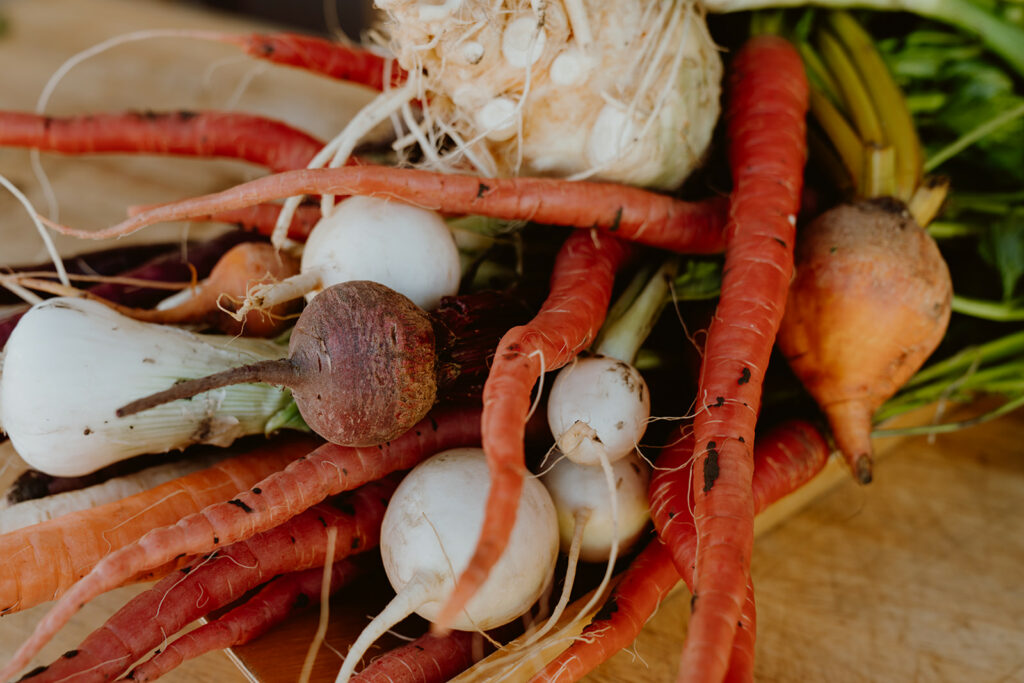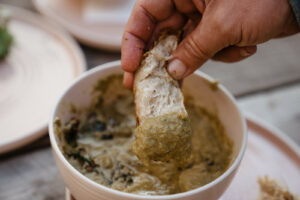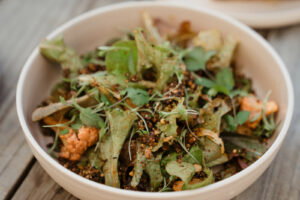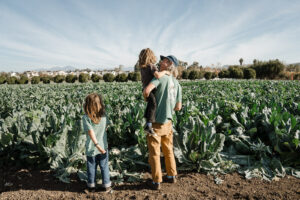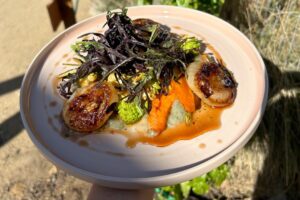Rich with filling fiber as well as rare vitamins and minerals, root vegetables were the comfort food of the ancient world.
A central part of our mission at The Ecology Center is to resurrect the rich vegetable diversity that has diminished under modern industrial farming. We’ve all heard the saying “variety is the spice of life.” But science shows us that variety is essential to both ecological and physical health. It also makes the growing process a more magical experience.

The Ecology Center farmer Lauren Stanko has spent the winter season direct-seeding heirloom carrots, beets, radishes, and other unique varieties of root vegetables. For her, appreciation for diversity begins with putting her hands in the soil. “There’s a spectacular moment when you pull it out of the ground, rinse off the dirt, and you’re stunned by how beautiful it is. You’re just in awe of this thing that’s so simple, and yet also complex.”
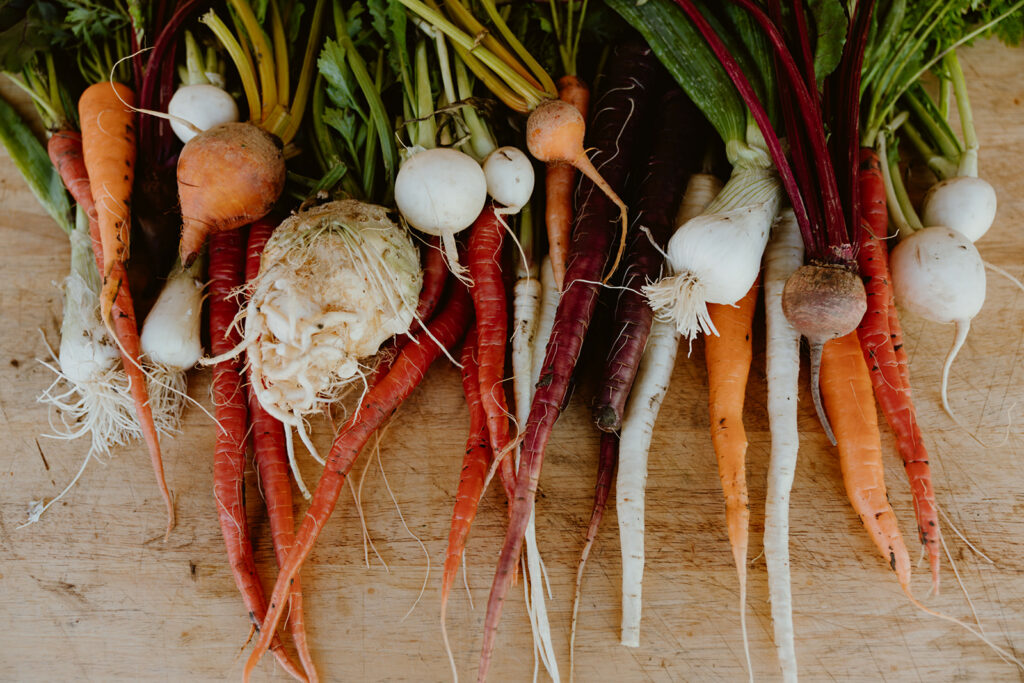
Cultivating diversity doesn’t come easily—each vegetable requires careful coordination of timing and labor. Carrots, beets, turnips, and radishes flourish in the colder temperatures, but as soon as hot weather strikes, their sweetness turns spicy and sharp. The connection to the seasons and their elements is vital to ensuring that every item in the Harvest Box offers peak flavor and nutrition.
“People don’t realize what a luxury it is to eat a carrot,” says Lauren. “You have to be very precise about seeding to get them to sprout and germinate. They like a specific amount of moisture—if it gets too hot, they’re not coming up. They need to be thinned and weeded all the time. When you harvest, you have to use a pitchfork to loosen up the ground because they root so heavily. It’s almost like mining for gems—which makes sense when you see their amazing colors.”
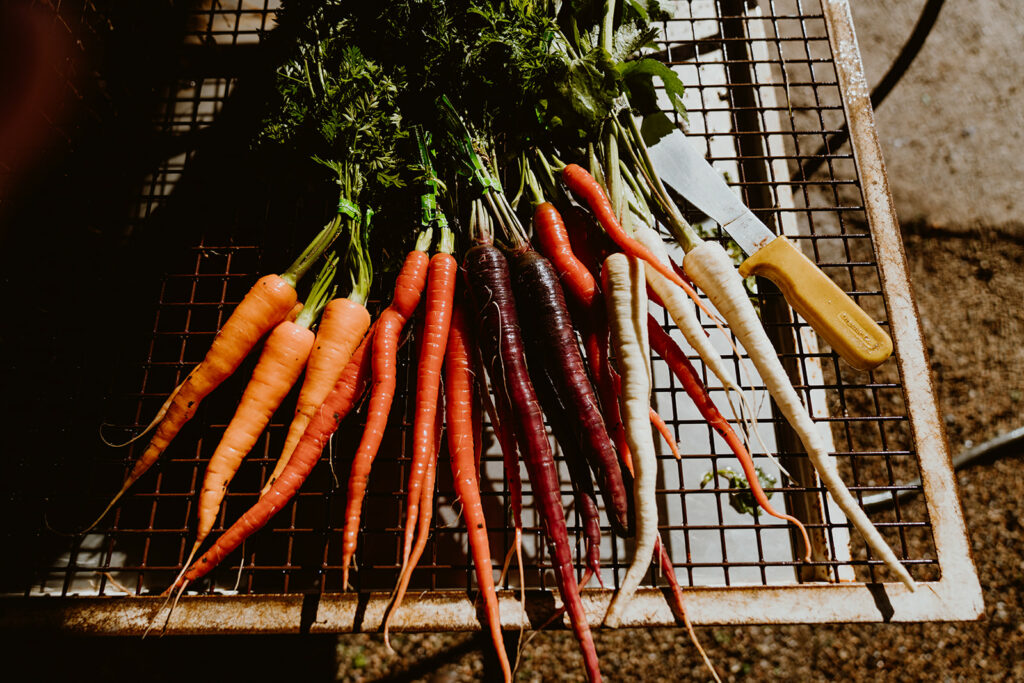
Those colors are more than just beautiful—they represent a rich spectrum of intertwined nutrition and flavor, unique to each variety. This brings up another important aspect of diversity: the culinary aspect. “When I see a wall of produce at the grocery store, I feel really uninterested,” says Lauren. “Diversity is so important to keeping food exciting. Big Parisian carrots have a great crunch and sweetness for snacking, while the Kyoto reds and the purples are beautiful roasted, especially if you keep the green tops on—their slender, tapering shape creates a really pleasant visual experience. Diversity makes me excited to eat foods that are really healthy.”
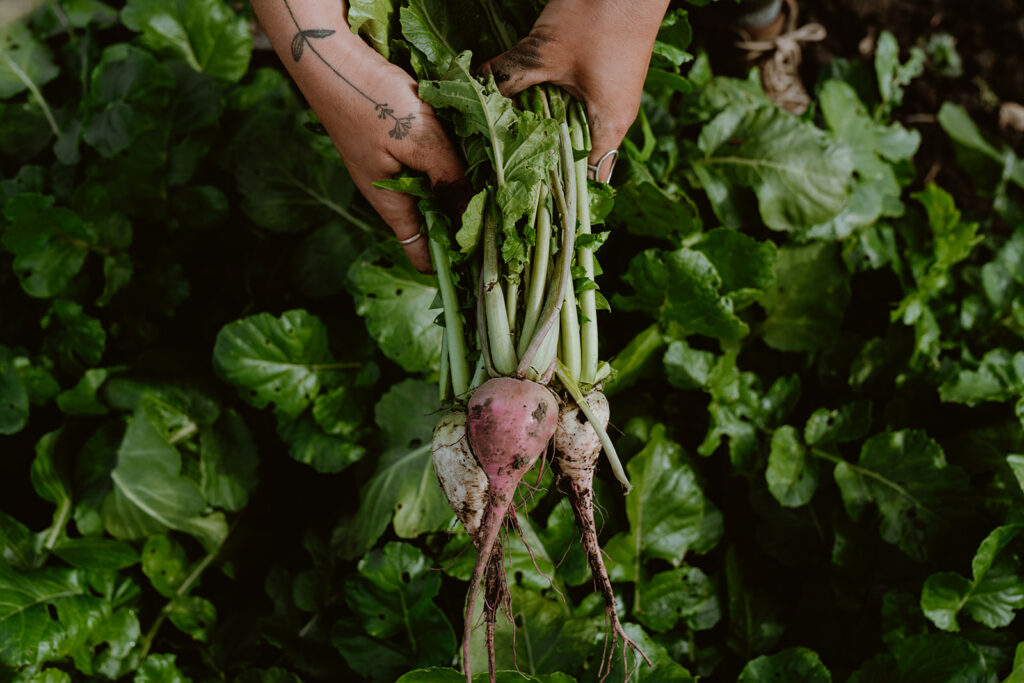
A few of the unique root vegetables you’ll find in your Harvest Box this season:
Chioggia Beet
First grown in a small fishing village in northern Italy, the Chioggia beet is often known as the “candy cane beet” thanks to the concentric red and white circles of its inner flesh.
Kyoto Red Carrot
Traditionally eaten on the Japanese New Year, Kyoto carrots are dark red in color and boast a rich, caramelly flavor and unusually smooth texture.
Hakurei Turnip
This tiny turnip variety often referred to as a “salad turnip,” features a delicate, almost fruity sweetness with buttery undertones.
Watermelon Radish
This daikon radish has a brilliant pink interior, a mild umami flavor, and a variety of antioxidants that support immune function and digestion.


